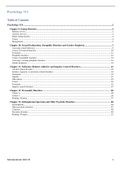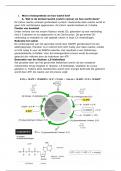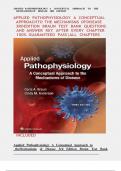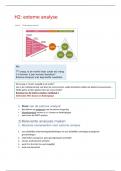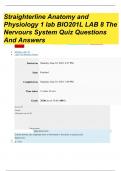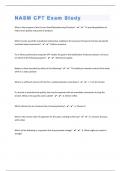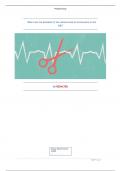Samenvatting
Summary Pysch 314 EXAM Notes Chapters 8-13
- Vak
- Instelling
- Boek
These notes outline Chapters 8, 10, 11, 12, and 13. They are inclusive of the textbook notes, as well as slide notes (used during 2021). This includes definitions as well as diagnostic criteria for chapters 12 and 13. Reviews: - "Your notes helped a lot. I really love how you set out your notes...
[Meer zien]
